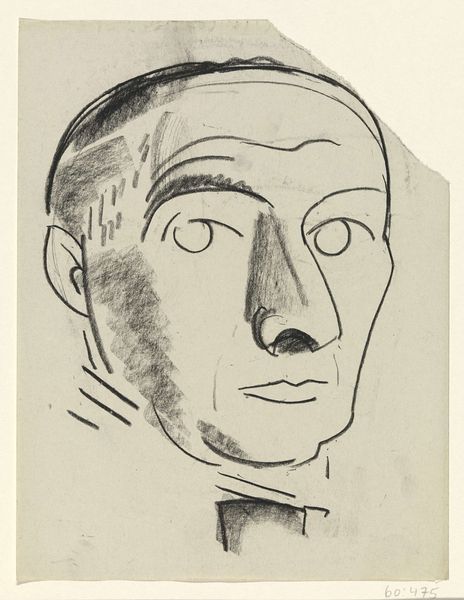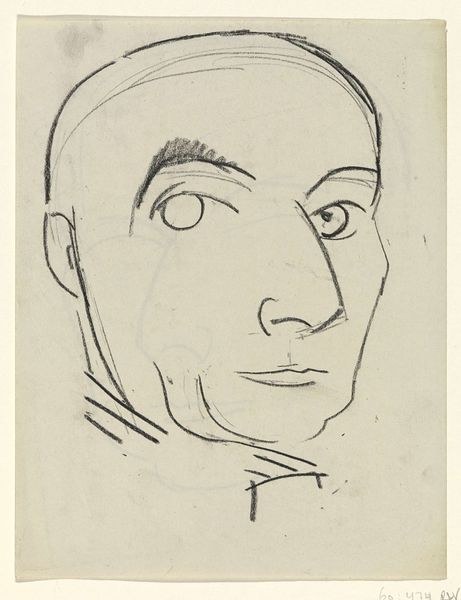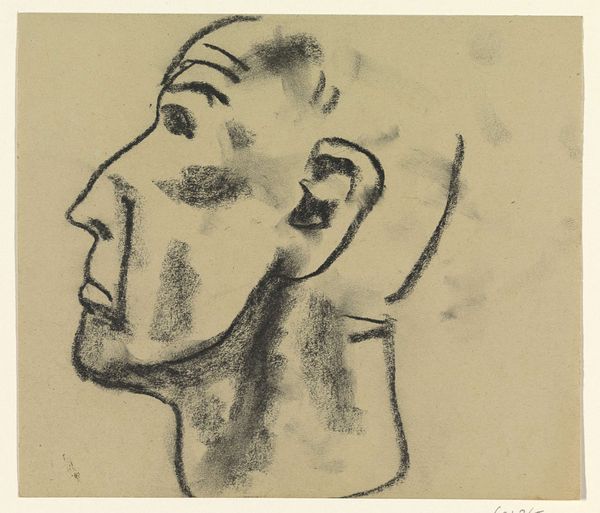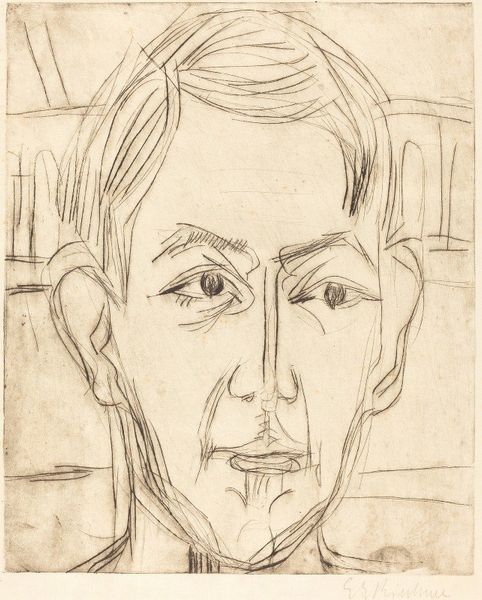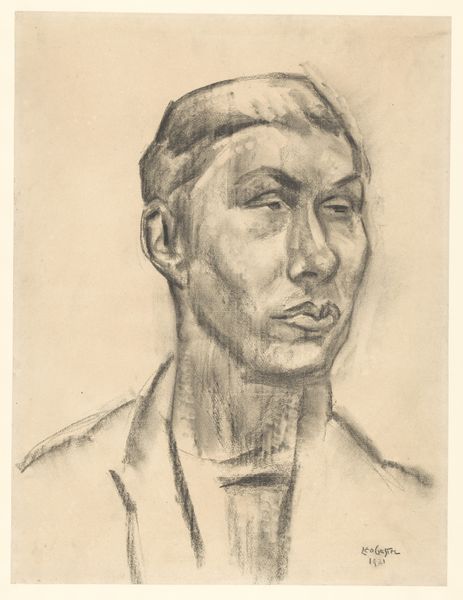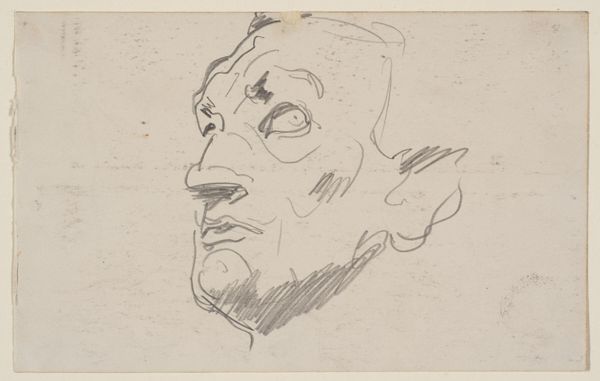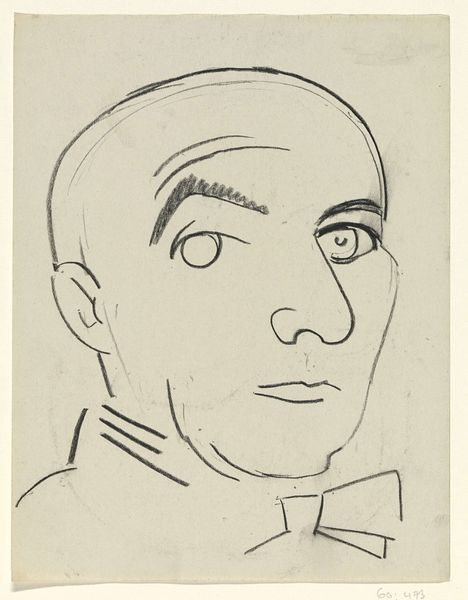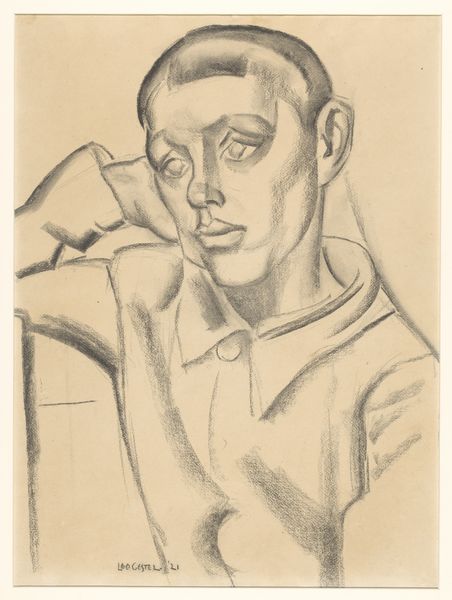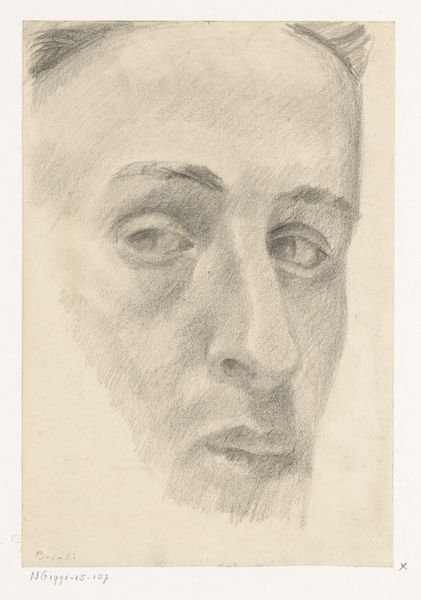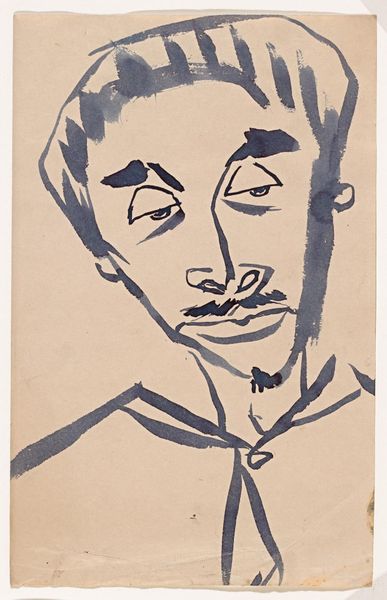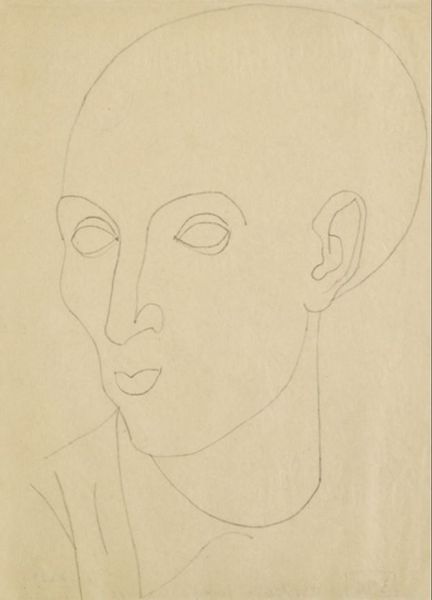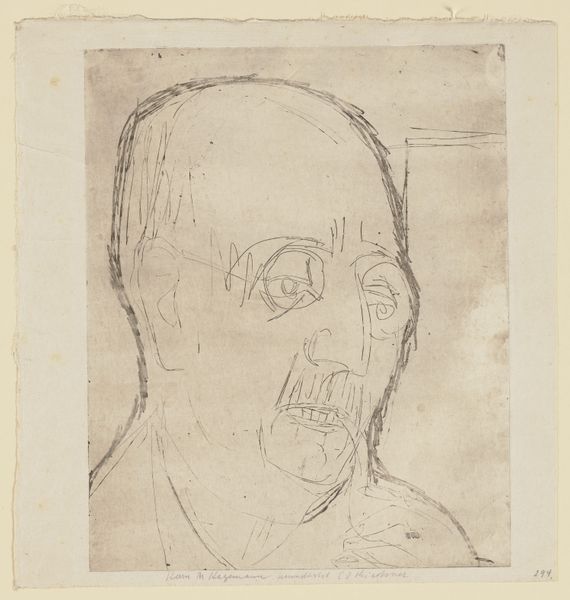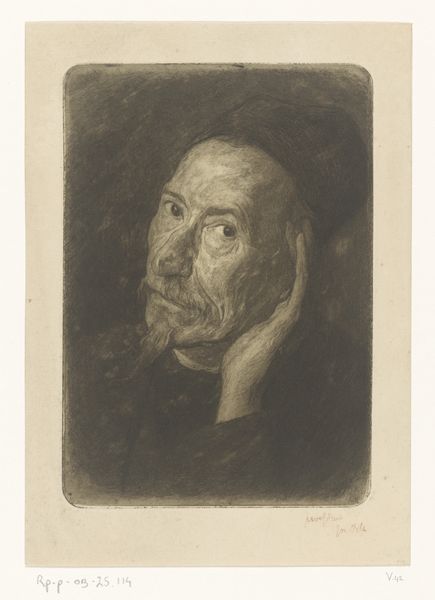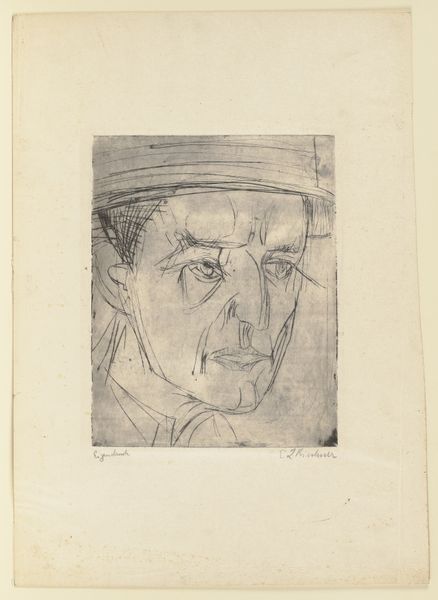
drawing, graphite
#
portrait
#
drawing
#
self-portrait
#
caricature
#
pencil drawing
#
expressionism
#
graphite
Dimensions: height 281 mm, width 251 mm
Copyright: Rijks Museum: Open Domain
Curator: Let's turn our attention to Leo Gestel's "Self-Portrait" from 1926, housed right here at the Rijksmuseum. It's a striking example of expressionist portraiture, rendered in graphite and pencil. Editor: Whoa, there’s an intensity! The direct gaze really gets you, doesn't it? The strong shadows give this drawing a bold, almost confrontational, mood. You almost get a caricature feeling with the focus on key features. Curator: Gestel was working within the context of post-World War I anxieties, so this bold depiction can be understood through the lens of questioning and challenging traditional representations. Considering Expressionism's broader focus on inner emotional states, do you feel like the work fulfills that intention? Editor: Definitely. The almost exaggerated features—like the eyebrow, and that slightly furrowed brow—make the portrait feel… volatile, on the brink of something. I wonder what was stirring inside him that day. Did he realize he looked so pensive? Maybe it was just bad coffee. Curator: Perhaps. It is interesting to analyze the piece considering Expressionism was a product of intellectual circles largely dominated by men, which arguably shaped its artistic focus and, to a certain degree, the types of subjects, typically other artists, explored at the time. Editor: He certainly wasn't afraid to explore the darks. And it adds such depth to his face, doesn't it? He manages to get so much expression with relatively simple materials. Curator: Indeed. The choice of graphite and pencil contributes to the raw emotional immediacy. We might think of this rawness as connected to similar approaches we see in artists grappling with trauma, identity, or the socio-political turmoil of that time. Editor: Seeing this, you realize how even "just a drawing" can be deeply profound. This guy, Gestel, really knew how to wield that pencil to bare his soul. Or at least, give us a darn good performance. Curator: Absolutely. "Zelfportret" serves as a powerful statement of selfhood but also highlights the tensions within representation and the power structures within artistic expression itself. Editor: And that intensity, after all this time, it’s a feeling you won’t shake off quickly.
Comments
No comments
Be the first to comment and join the conversation on the ultimate creative platform.
